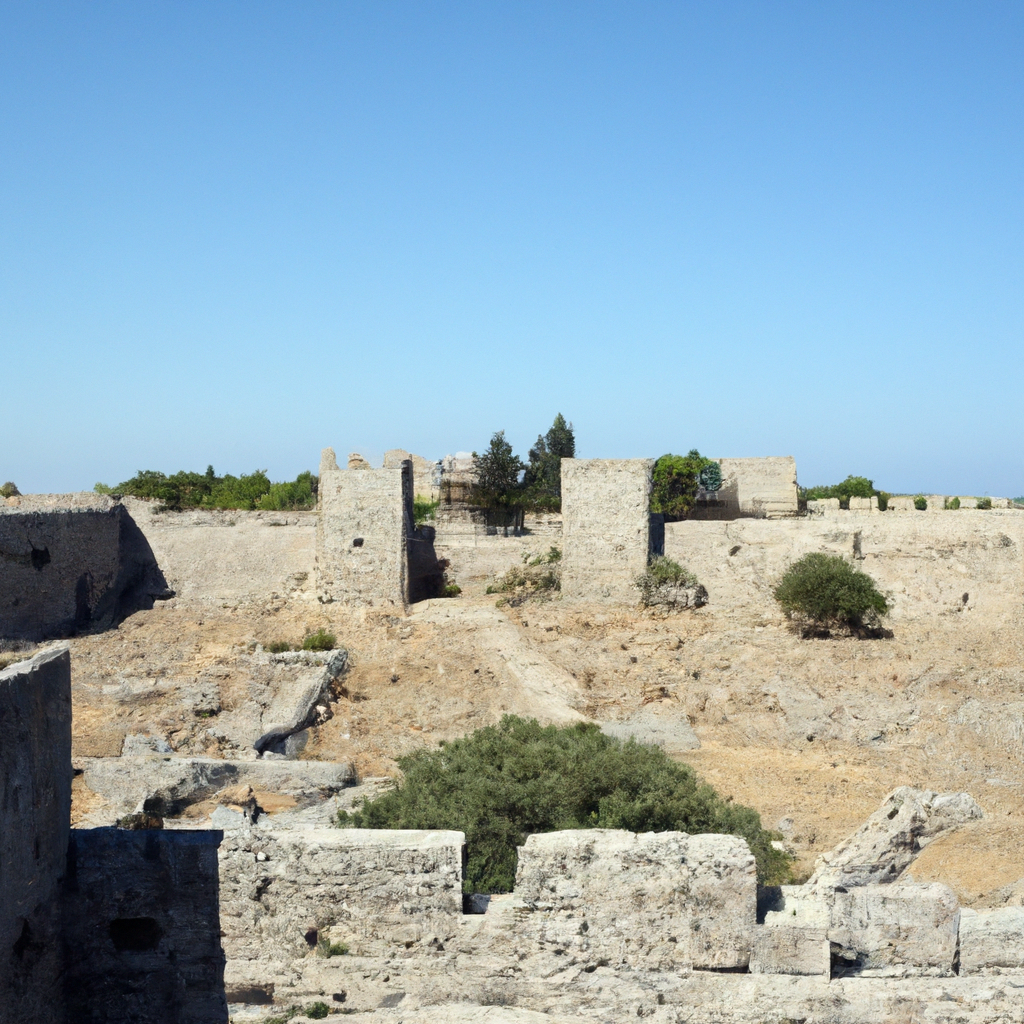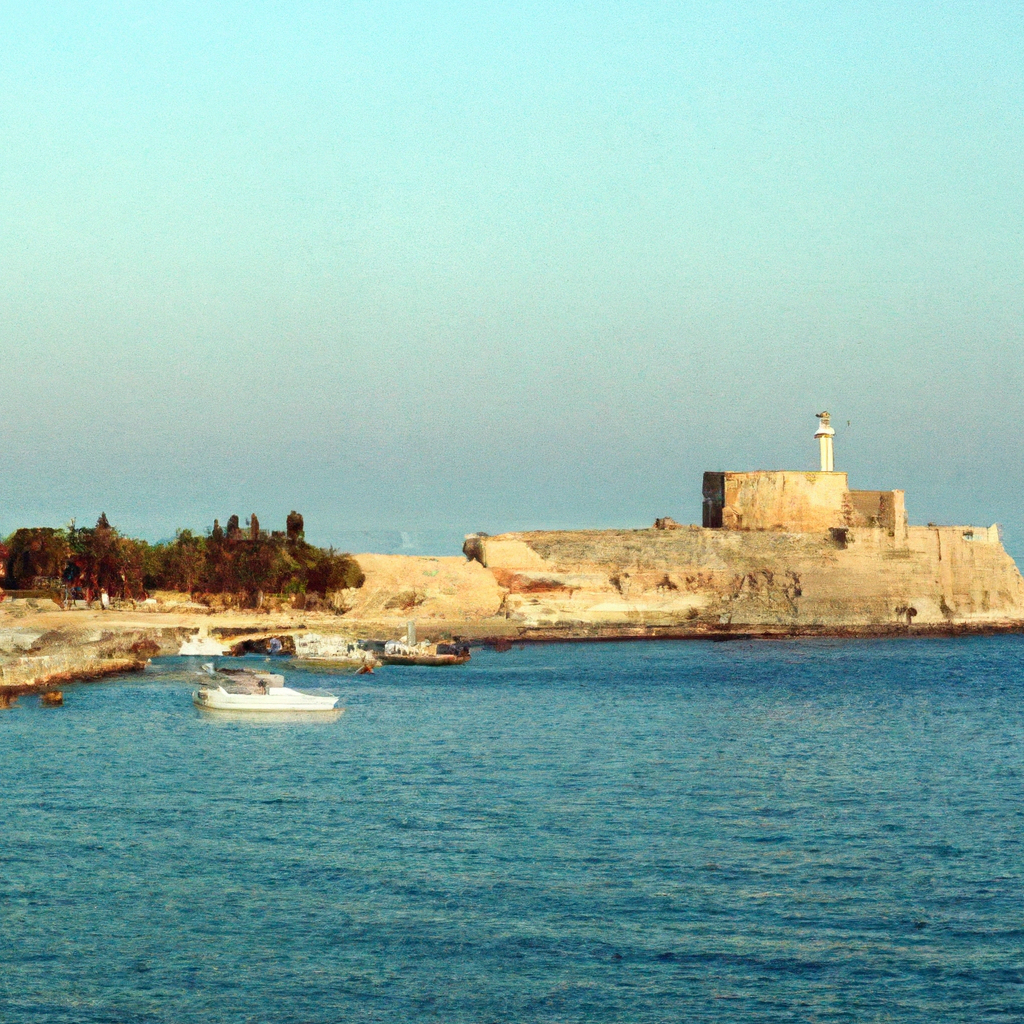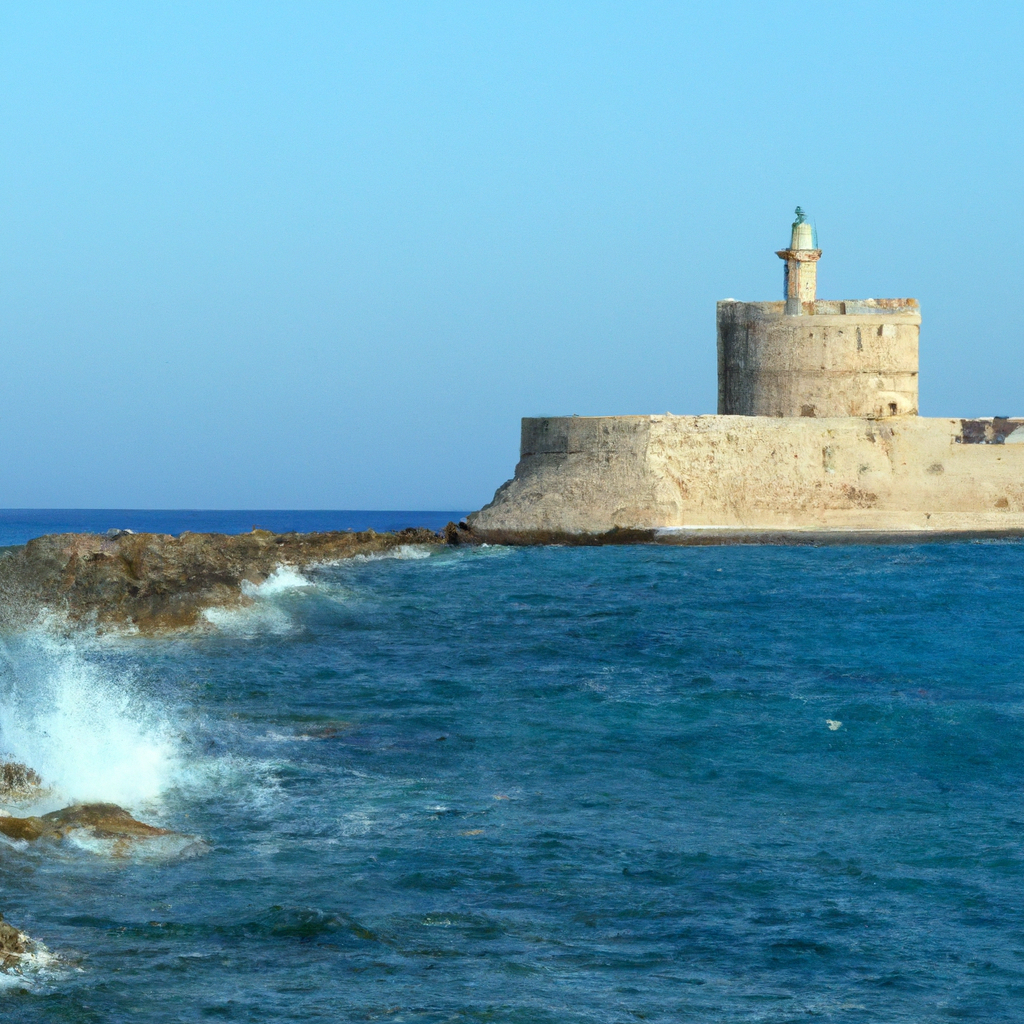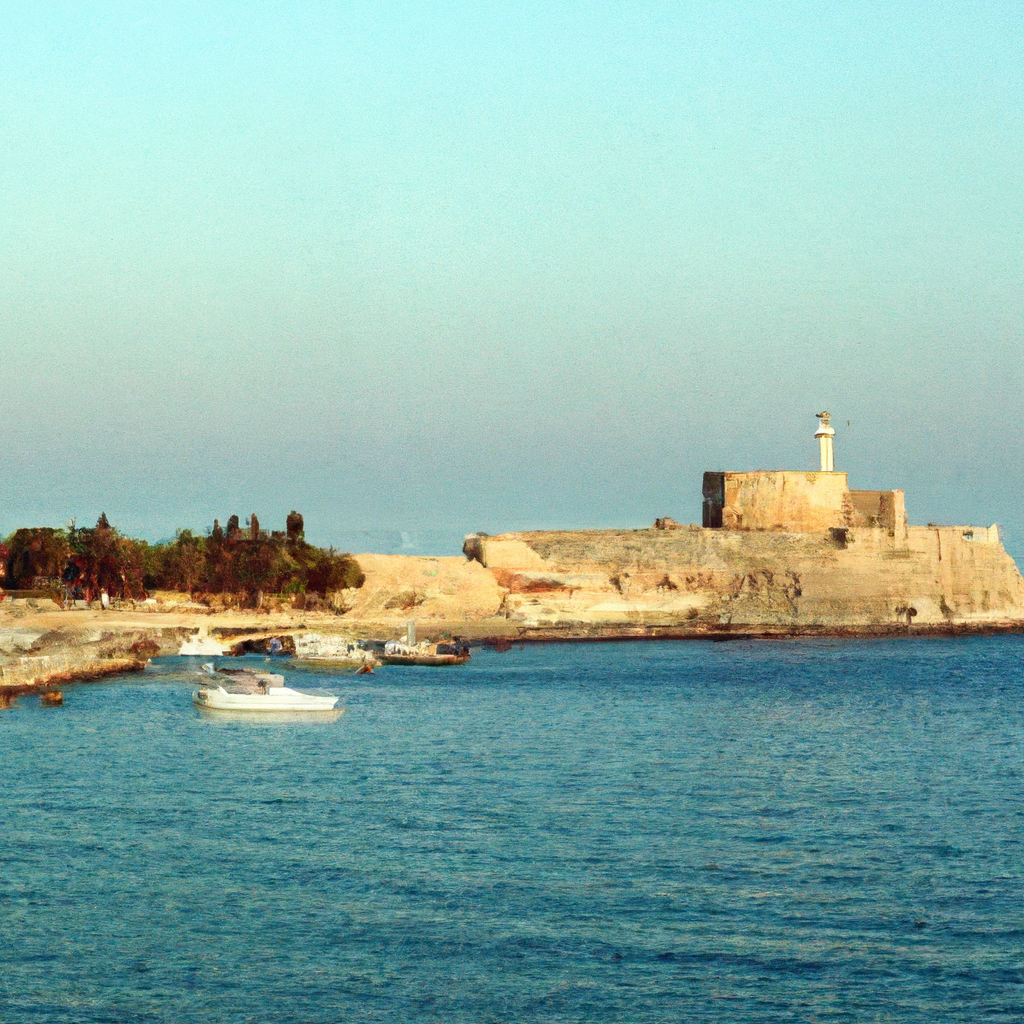Imagine stepping back in time and embarking on a captivating journey through the historical landmarks of Rhodes. This enchanting Greek island holds countless secrets and stories just waiting to be discovered. From the awe-inspiring medieval walls of Rhodes Town to the majestic ruins of the Temple of Apollo, each landmark offers a glimpse into the island’s rich and vibrant past. As you navigate through the cobblestone streets and soak in the Mediterranean breeze, you can’t help but feel a sense of awe and wonder. Join us on this remarkable adventure and unlock the mysteries of Rhodes’ fascinating history.
1. The Palace of the Grand Master of the Knights of Rhodes
1.1 History of the Palace
Welcome to the Palace of the Grand Master of the Knights of Rhodes! This magnificent palace holds a significant place in the history of Rhodes. Originally built as a Byzantine fortress in the 7th century, it was later destroyed by an earthquake. During the 14th century, the Knights of St. John took over the island and transformed the ruins into a grand palace. The Palace of the Grand Master served as the headquarters for the knights and the residence of the Grand Master.
1.2 Architecture and Design
The architecture of the palace is a blend of medieval and Gothic elements, reflecting the influence of the Knights of St. John. The exterior features imposing walls and towers, exuding a sense of power and strength. Inside, you’ll find stunning courtyards, intricate stone carvings, and beautiful frescoes that showcase the craftsmanship of that era. The palace is a true testament to the architectural prowess of the knights and the grandeur of their rule.
1.3 Must-See Features
As you explore the Palace of the Grand Master, make sure to visit the Great Hall, which impresses with its grandeur and ornate decorations. The Hall of Knights is another highlight, adorned with intricate frescoes depicting scenes from Greek mythology and historical events. Take a stroll through the lush gardens, where you can enjoy the tranquility and marvel at the exquisite statues scattered throughout the grounds. Don’t forget to visit the impressive medieval armory, housing a collection of weaponry and armor from different periods.
1.4 Visit Information
To make the most of your visit to the Palace of the Grand Master, keep in mind that it is open to the public for guided tours. The entrance fee is reasonable, considering the historical significance and architectural splendor that awaits you. The palace is conveniently located within the medieval city of Rhodes, making it easily accessible. Remember to dress comfortably and wear suitable footwear, as there is plenty of walking involved. Camera enthusiasts will be happy to know that photography is allowed inside, so be sure to capture the stunning details and breathtaking views.
2. The Acropolis of Rhodes
2.1 Overview of the Acropolis
Next on our journey through historical landmarks is the Acropolis of Rhodes. Perched atop a hill overlooking the city, the Acropolis offers panoramic views of the island and the surrounding Aegean Sea. This ancient site holds immense historical and archaeological significance and is a must-visit destination for history enthusiasts and culture seekers.
2.2 Historical Significance
The Acropolis of Rhodes dates back to the Hellenistic period, when it was built as a fortified citadel to protect the city. Over the centuries, it witnessed various civilizations ruling over Rhodes, including the Romans and the Byzantines. The remnants of temples, an ancient stadium, and defensive walls are a testament to the rich history of this site.
2.3 Architectural Highlights
One of the architectural highlights of the Acropolis is the Temple of Apollo, which was a grand structure dedicated to the god of sun and light. Although only a few columns and fragments remain, it still offers a glimpse into its former glory. The Ancient Stadium, which hosted athletic competitions during ancient times, is another notable feature. The partially excavated stadium gives visitors a sense of the scale and grandeur of the sporting events that once took place here.
2.4 Visit Information
To visit the Acropolis of Rhodes, you can take a leisurely stroll or opt for a taxi or bus ride to the top of the hill. The site is open to the public, and there is an affordable entrance fee. It is advisable to bring comfortable footwear and protective sun gear, as you will be exposed to the elements during your visit. Don’t forget your camera, as the picturesque views from the Acropolis are perfect for capturing memories of your trip to Rhodes.

3. Ancient Kamiros
3.1 History of Kamiros
Our journey through history now takes us to Ancient Kamiros, an ancient city that thrived during the Hellenistic period. Kamiros was one of the three prominent cities on the island and played a significant role in trade and commerce. The city was inhabited from the 7th century BC until its decline in the 2nd century AD.
3.2 Archaeological Discoveries
Excavations in Kamiros have revealed a wealth of archaeological treasures, providing valuable insights into the daily lives of its ancient inhabitants. The extensive ruins showcase both residential and public structures, including houses, temples, a market, and a system of water supply and drainage. Walking through the ancient streets, you can imagine the bustling life that once filled this city.
3.3 Notable Structures
The most impressive structure in Kamiros is the ancient agora, a central public meeting place and marketplace. Here, you can see the remains of the stoas, which were covered walkways with shops and meeting areas. The Temple of Athena Kameiras, dedicated to the city’s patron goddess, is another notable structure. Although mostly in ruins, the temple still offers glimpses into its past magnificence.
3.4 Visit Information
To explore the ancient city of Kamiros, you can embark on a guided tour or venture on your own. Comfortable walking shoes are essential, as you will be navigating through ruins and uneven terrain. The site is open to the public, and there is an entry fee. It is worth noting that there are shaded areas throughout the ruins, allowing you to take breaks from the sun and soak in the atmosphere of this ancient site.
4. Rhodes Archaeological Museum
4.1 Exhibits and Collections
When it comes to understanding the rich history of Rhodes, a visit to the Rhodes Archaeological Museum is a must. The museum houses a vast collection of artifacts and exhibits that span various periods and civilizations that once thrived on the island. From statues and pottery to jewelry and ancient coins, the museum offers a comprehensive look into Rhodes’ past.
4.2 Highlights of the Museum
Some of the highlights of the Rhodes Archaeological Museum include the famous Aphrodite of Rhodes, a stunning marble statue that embodies beauty and grace. The collection of ancient pottery provides insights into the daily lives, traditions, and artistic expressions of the island’s inhabitants throughout history. Exploring the ancient coin collection allows you to delve into the economic and political aspects of Rhodes.
4.3 History and Importance
The museum itself is housed in the medieval Hospital of the Knights of St. John, adding to its historical significance. As you wander through the corridors and rooms, you can appreciate the architecture and imagine the hospital’s role in providing care to the knights and the local population. The combination of the artifacts and the setting creates a unique experience that captures the essence of Rhodes’ past.
4.4 Visit Information
The Rhodes Archaeological Museum is conveniently located within the medieval town, making it easily accessible. The entrance fee is reasonable, considering the wealth of knowledge and history that awaits you inside. It is advisable to allocate enough time to fully explore the museum, as there is much to discover. The museum is open to the public, and photography is allowed, so be sure to bring your camera and capture the moments as you immerse yourself in the island’s past.

5. The Street of the Knights
5.1 Historical Background
Stepping onto the Street of the Knights takes you on a journey back in time to the medieval period of Rhodes. This cobblestone street was once the residence of the knights belonging to different orders that ruled over the island. The street holds immense historical significance and offers a unique glimpse into the past.
5.2 Architectural Features
Walking along the Street of the Knights, you will be captivated by the well-preserved medieval architecture. The buildings lining the street showcase various architectural styles, reflecting the influence of different orders. From Gothic to Renaissance, the facades are adorned with intricate carvings, beautiful balconies, and imposing doorways. The street’s ambiance transports you to a bygone era.
5.3 Knights’ Inns and Languages
One of the notable features of the Street of the Knights is the Knights’ Inns. These were residences and lodgings for the knights and their respective orders. Each inn had its distinctive emblem displayed prominently on its facade, representing the different nationalities and languages spoken by the knights. As you stroll along this historic street, you can encounter the remnants of these inns and imagine the vibrant atmosphere that once filled these halls.
5.4 Visit Information
The Street of the Knights is located within the medieval city of Rhodes, making it easily accessible. Take your time to explore the street, as there are many hidden gems waiting to be discovered. Consider joining a guided tour to gain insight into the historical context and architectural details. Don’t forget to bring comfortable footwear, as the street is cobbled. This remarkable street offers a unique opportunity to experience the medieval atmosphere of Rhodes, so be sure to add it to your itinerary.
6. Monastery of Filerimos
6.1 History and Significance
Situated on the hill of Filerimos, overlooking the island of Rhodes, the Monastery of Filerimos holds both religious and historical importance. Originally built by the Knights of St. John in the 14th century, the monastery became a place of worship and pilgrimage, attracting visitors from near and far. The tranquil atmosphere and panoramic views make it a serene and cherished site.
6.2 Iconic Structures
One of the iconic structures within the monastery complex is the Church of Our Lady built in the 15th century. The church showcases beautiful frescoes and Byzantine-style architecture, providing a glimpse into the island’s religious heritage. As you explore the monastery, you will also come across the impressive Calvary, a pathway lined with statues depicting scenes from the Passion of Christ. Ascending to the top rewards you with breathtaking vistas of the surrounding landscape.
6.3 Panoramic Views
The panoramic views from the Monastery of Filerimos are simply breathtaking. From the hilltop, you can see the Aegean Sea, rolling hills, and the city of Rhodes in the distance. Take a moment to soak in the tranquility and appreciate the natural beauty of the island. The combination of history, spirituality, and picturesque surroundings makes this a must-visit destination.
6.4 Visit Information
To visit the Monastery of Filerimos, you can either walk up the hill or take a taxi or bus. The site is open to the public, and there is no entrance fee. It is advisable to bring water and sun protection, especially during the summer months. Remember to dress modestly out of respect for the religious nature of the site. A visit to the Monastery of Filerimos offers a peaceful retreat and an opportunity to connect with the island’s religious and historical roots.

7. Ancient Stadium of Rhodes
7.1 Historical Context
Travel back to ancient times as you explore the Ancient Stadium of Rhodes. This stadium, known as Diagoras Stadium, was built during the Hellenistic period and once hosted athletic competitions and festivals. It is named after Diagoras, a famous boxer from Rhodes who achieved great success in the ancient Olympic Games.
7.2 Architecture and Design
The Ancient Stadium of Rhodes boasts a magnificent design that showcases the architectural prowess of the ancients. The stadium follows a rectangular shape and is surrounded by stone seating, believed to have accommodated around 30,000 spectators. The track itself was made of packed clay and measured approximately 205 meters in length.
7.3 Athletic Events and Competitions
During ancient times, the stadium was not only a venue for sporting events but also a place where cultural and religious activities took place. From chariot races to foot races, it witnessed the excitement and dedication of athletes striving for victory. Today, while the stadium is in ruins, its remnants still evoke a sense of grandeur and provide insights into the ancient Olympic Games.
7.4 Visit Information
To visit the Ancient Stadium of Rhodes, make your way to the area of Monte Smith. The site is open to the public, and there is no entrance fee. However, it is important to note that there are no guided tours, so it is advisable to do some research beforehand or bring a guidebook to fully understand the significance of the site. Exploring the Ancient Stadium allows you to walk in the footsteps of ancient athletes and immerse yourself in the history and spirit of sport.
8. The Colossus of Rhodes
8.1 Myth and Legend
The Colossus of Rhodes is undoubtedly one of the most famous historical landmarks associated with the island. According to ancient accounts, this massive statue was constructed to honor the sun god Helios. Standing at approximately 33 meters tall, it was one of the Seven Wonders of the Ancient World.
8.2 Construction and Destruction
The Colossus of Rhodes was built during the 3rd century BC and stood at the entrance of the harbor, welcoming ships and visitors to the island. Constructed from bronze and iron, the statue was a marvel of engineering and artistry. Unfortunately, a devastating earthquake struck Rhodes in 226 BC, toppling the Colossus and rendering it irreparable.
8.3 Modern Interpretation
While the Colossus of Rhodes no longer stands today, its myth and legacy continue to captivate the imagination. Imagine the awe-inspiring sight of this towering statue as ships sailed into the harbor. Although you won’t find the original statue, you can still find smaller replicas and depictions of the Colossus throughout the island.
8.4 Visit Information
While there is no specific location to visit the Colossus of Rhodes, you can explore and appreciate its significance through various statues and monuments scattered throughout the island. Be sure to check out the modern interpretations and artistic representations of the Colossus during your visit to Rhodes. It serves as a reminder of the island’s rich history and the legendary status that the Colossus once held.

9. Museum of Modern Greek Art in Rhodes
9.1 Collection Overview
For those seeking a more contemporary perspective on art and culture, a visit to the Museum of Modern Greek Art in Rhodes is a must. This museum houses a diverse collection of artwork created by Greek artists from the 19th century to the present day. From paintings and sculptures to installations and multimedia art, the museum offers a comprehensive representation of Greek artistic expression.
9.2 Prominent Artists
The Museum of Modern Greek Art features works from prominent Greek artists who have made their mark on the international art scene. Artists such as Yiannis Moralis, Niki de Saint Phalle, and Andreas Georgiadis have their pieces on display, showcasing their unique styles and contributions to the world of art. Exploring the collection allows you to appreciate the evolution of Greek art over time.
9.3 Evolving Art Movements
The museum’s collection reflects the evolution of art movements in Greece, from the traditional and academic to the avant-garde and experimental. As you explore the galleries, you can observe the shifting artistic trends and the influence of societal, political, and cultural factors on Greek art. The craftsmanship, creativity, and diversity of the artwork are sure to leave a lasting impression.
9.4 Visit Information
The Museum of Modern Greek Art is located in the medieval town of Rhodes, making it easily accessible. The entrance fee is affordable, offering great value for the art enthusiasts and curious visitors alike. Photography is allowed inside the museum, allowing you to capture the beauty and uniqueness of the artwork. Immerse yourself in the world of modern Greek art and gain a deeper understanding of the island’s artistic heritage.
10. Rhodes’ Medieval City Walls
10.1 Defensive Structure
Our exploration of historical landmarks in Rhodes comes to a close with the medieval city walls. These imposing fortifications surround the old town, serving as a reminder of Rhodes’ strategic importance throughout history. The walls were constructed by the Knights of St. John in the 14th century and played a crucial role in protecting the city from invaders.
10.2 Historical Significance
The medieval city walls are a testament to the military strength and engineering prowess of the knights. They successfully defended the city against various sieges and attacks over the centuries. The walls stand as a testament to the rich history and turbulent past of Rhodes.
10.3 Towers and Gates
The walls consist of numerous towers and gates, each with its own historical and architectural significance. The imposing Gate of Saint George, the main entrance to the old town, welcomes visitors with its grandeur. Other notable structures include the Tower of Wind, the Tower of Naillac, and the Tower of St. Nicholas. Climb the towers, take in the sweeping views, and imagine the defensive battles that once took place.
10.4 Visit Information
To fully appreciate the medieval city walls, take a leisurely walk around the perimeter of the old town. The walls can be accessed from various points, and there is no entrance fee. The paths along the walls provide a scenic and atmospheric experience, allowing you to immerse yourself in the history and grandeur of Rhodes. Remember to wear comfortable shoes and bring water, as the walk can be quite long. As you walk the ancient walls, you can reflect on the island’s past and the resilience of its inhabitants throughout the ages.
In conclusion, Rhodes is a treasure trove of historical landmarks that offers visitors a glimpse into the island’s rich past. From the grandeur of the Palace of the Grand Master of the Knights of Rhodes to the ancient ruins of Kamiros, each site tells a story of the civilizations that once thrived on this Greek island. Whether you are a history buff, an art enthusiast, or a curious traveler, Rhodes has something to captivate your imagination. So, pack your bags, put on your walking shoes, and embark on this journey back in time to explore the historical wonders of Rhodes.
